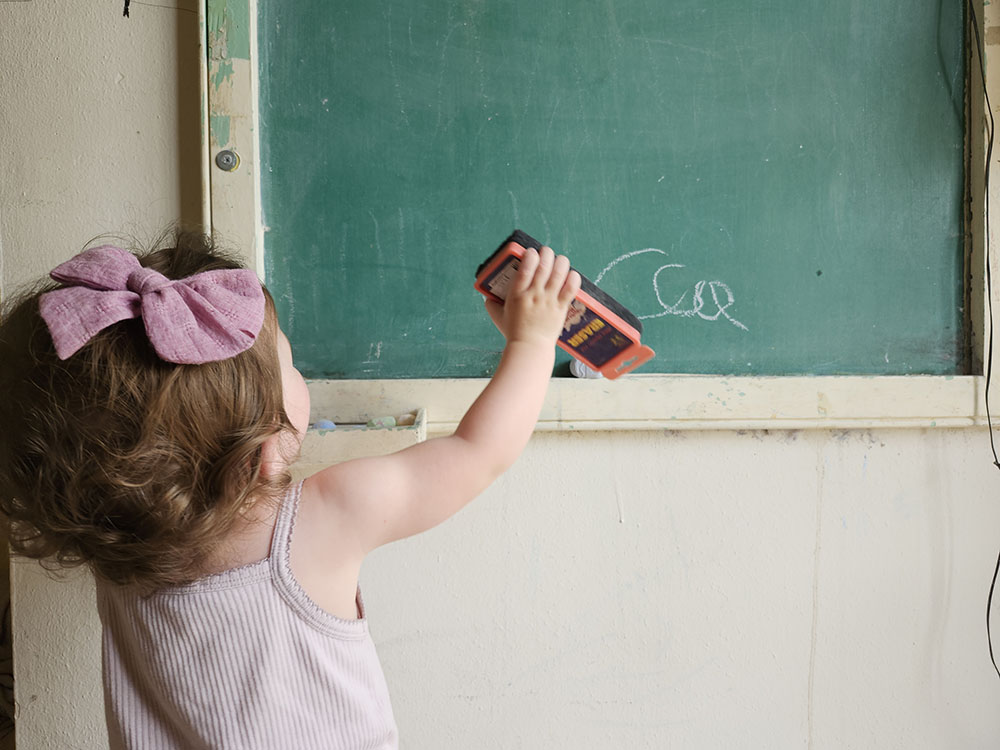 April 9, 2025–A business guru recently proposed we could increase the global economy by 2-3% by installing large whiteboards in every home.
April 9, 2025–A business guru recently proposed we could increase the global economy by 2-3% by installing large whiteboards in every home.
This caught my attention because I am an inveterate wall scribbler. I have worked in offices where we truly believed if every surface was whiteboard, we could fill it up and erase it endlessly.
When a school I worked at was remodeling, I happily carried off the old green “blackboard” and took it home to hang inside our front door. We are now in our second generation of kids writing, erasing, and referring to this.
How do we use it?
For starters, to make TO DO lists. I’ve written before of my compulsion to keep work lists of everything. From picking up the yard to filing taxes, mending fence, and finishing a writing assignment. Is there any act more satisfying than drawing a line through an item that is DONE? I sometimes write down a task that I’ve already accomplished, then immediately draw a line through it, just to experience the satisfaction. Like a real estate company publishing SOLD listings. I may leave that up there for weeks, until I need the space to insert another task.
This works for chore lists for kids. I learned as a teacher there is nothing as draining as repeating the homework assignments to every kid in the classroom. Now I write it on the chalkboard, and when someone asks what needs to be done, I simply smile and point. Let them learn the joy of drawing a line through a completed task.
As homeschooling facilitators, a chalkboard is essential. When the time comes to diagram a sentence, explain a math concept, or illustrate moon phases, there is nothing like demonstrating it on the board. Even more powerful is something they probably did in the little school on the prairie days–handing the chalk to the student. We all remember standing at the front of the room with the pressure of 24 kids’ eyes staring at us as we solved 2 + 2. We regularly do spelling practice on the board. Our favorite method is by playing the old game of Hangman.
Back to the premise: Is there measurable learning impact using a whiteboard or chalkboard?
Here’s what Grok says:
“Whiteboards in homes can boost productivity by aiding task organization, brainstorming, and creative problem-solving. Examples include family schedule planning, homeschooling lessons, personal goal tracking, and collaborative project mapping for remote work. Studies show visual aids like whiteboards improve memory retention by up to 65%.”
I prefer chalkboards to whiteboards, if only for the lower maintenance level. Using whiteboards–those seductive white beasts–you constantly deal with dried out markers that don’t mark and erasers that don’t erase.
Using blackboards, chalk is cheap and available everywhere in any size and every color.
Of course, now whiteboards are considered old technology. Last time I was in front of a high school classroom, they had installed a high-tech interactive white board. I tried to write on it and was completely bamboozled. A helpful student patiently showed me how to use the stylus to create an image that showed up on a computer screen.
Oh how I pity those students. They’ll never experience the staccato sound of chalk scraping out the day’s assignment, or the cough-inducing clouds of dust from pounding erasers on the chalk tree. The speed and volume of chalkboard writing was often the soundtrack of the teacher’s mood. When it sounded like the rat-a-tat of a machine gun, you knew you’d be working on that essay over Spring Break.
Some now predict AI will take over the role of teachers in the school of tomorrow. I will accept that if our robot rulers follow the science and use white chalk on a green blackboard.
XXX
Phil Houseal writes columns using pencil on paper at FullHousePR.com.